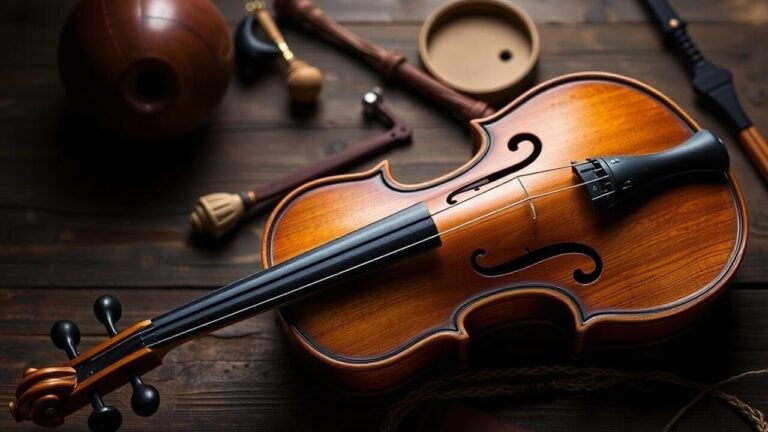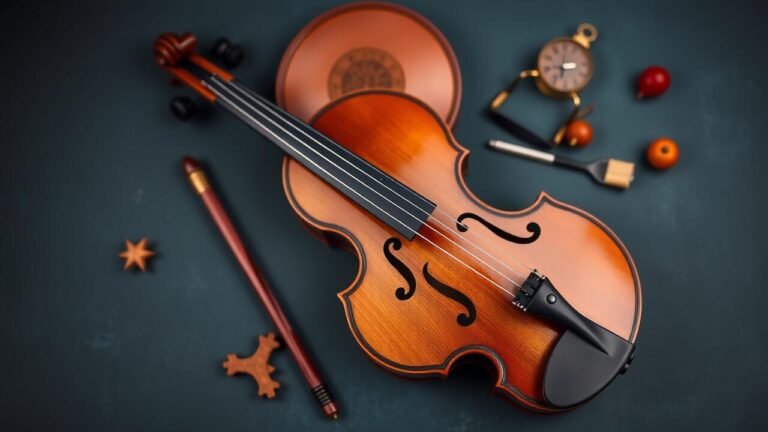How to Care for Your Indiana State Fiddle

Inspecting Your Indiana State Fiddle for Any Damage
Inspecting your Indiana State Fiddle for any damage is an essential part of maintaining the instrument’s quality and longevity. Begin by carefully examining the body of the fiddle, paying close attention to the wood for any signs of cracks, splits, or warping. Cracks can significantly impact the sound and structural integrity of the fiddle, so it is crucial to address them promptly. Additionally, check for any loose parts such as tuning pegs, chinrest, or tailpiece, as these can affect the fiddle’s playability and tone.
Furthermore, inspect the fingerboard and strings for any wear and tear. Look for grooves or unevenness on the fingerboard that could affect your playing comfort and accuracy. It’s also important to check the strings for any signs of fraying or corrosion, as this can impact the sound quality of your fiddle. By regularly inspecting your Indiana State Fiddle for any damage, you can ensure that it remains in optimal playing condition for years to come.
Checking for Cracks or Loose Parts Regularly
Inspecting your Indiana State Fiddle for any damage is a crucial part of its maintenance routine. Regularly checking for cracks or loose parts ensures that your instrument remains in optimal condition for playing. Begin by visually examining the fiddle’s body, neck, and scroll for any signs of damage. Pay close attention to any visible cracks and inspect the seams where the different parts of the instrument are joined together. It’s important to address any issues promptly to prevent further damage and maintain the quality of your Indiana State Fiddle.
In addition to checking for cracks, it’s essential to inspect your fiddle for loose parts that may affect its playability. Gently tap various sections of the instrument to listen for any unusual sounds that could indicate loose components. Ensure that the tuning pegs, tailpiece, and chinrest are securely in place and functioning correctly. By regularly examining your Indiana State Fiddle for both cracks and loose parts, you can prolong its lifespan and enjoy consistent performance quality.
Understanding the Unique Features of Your Indiana State Fiddle
When it comes to your Indiana State Fiddle, understanding its unique features is essential for proper care and maintenance. One distinctive characteristic of the Indiana State Fiddle is its use of local woods such as maple and spruce, which contribute to its warm and rich tone. These woods are carefully selected for their acoustic properties, ensuring that each instrument is crafted to produce a unique sound that captures the spirit of Indiana’s musical heritage.
Additionally, the Indiana State Fiddle is known for its ornate inlays and intricate designs that pay homage to the state’s culture and history. From detailed engravings of Indiana’s state flower, the peony, to representations of historical landmarks like the Indiana State Capitol building, these embellishments add a touch of artistry to the instrument. By understanding and appreciating these unique features, you can develop a deeper connection to your Indiana State Fiddle and fully embrace its significance in the realm of traditional American music.
Learning About the Different Parts of the Instrument
Understanding the different parts of your Indiana State Fiddle is essential for any player looking to care for their instrument properly. The main components of the fiddle include the body, neck, fingerboard, tailpiece, bridge, and strings. The body is the hollow part of the fiddle where the sound is produced, while the neck extends from the body and holds the fingerboard in place.
The fingerboard is where the player presses down on the strings to change the pitch of the notes. The tailpiece anchors the strings at the bottom of the instrument, while the bridge supports the strings and transmits their vibrations to the body for sound projection. Lastly, the strings themselves are what produces the sound when played with the bow or plucked with fingers. Familiarizing yourself with these parts will not only help you care for your fiddle but also understand how they contribute to the overall sound and playability of the instrument.
Proper Bowing Techniques for Your Indiana State Fiddle
To ensure you produce a clear and consistent sound while playing your Indiana State Fiddle, mastering proper bowing techniques is essential. The way you hold the bow significantly impacts the quality of sound you produce. Make sure to hold the bow lightly between your thumb and first finger, allowing your other fingers to rest gently on the bow. This grip will give you better control over the bow and help you create a smooth and even sound.
In addition to holding the bow correctly, focus on maintaining a straight bowing arm as you move the bow across the strings. Keep your wrist flexible and allow it to move naturally with the bowing motion. By practicing a fluid and consistent arm movement, you can produce a more harmonious sound from your Indiana State Fiddle. Remember, mastering bowing techniques takes time and practice, so be patient with yourself as you work towards achieving a beautiful tone.
Holding the Bow Correctly to Produce Clear and Consistent Sound
To produce a clear and consistent sound on your Indiana State Fiddle, it is crucial to hold the bow correctly. The bow should be held with your right hand, using all five fingers to maintain a stable grip. Place your thumb on the designated thumb grip and let your remaining fingers rest comfortably on the bow stick. Make sure not to grip the bow too tightly as this can restrict the natural movement required for smooth bowing.
Proper positioning of the bow on the strings is essential for achieving a balanced tone. Aim to keep the bow parallel to the bridge of the fiddle while maintaining a straight wrist. Drawing the bow across the strings using the full length of the bow hair will produce a rich and resonant sound. Practice playing long, sustained notes to refine your bowing technique and to ensure a consistent sound quality throughout your performance.
Using Rosin to Maintain Bow Grip on Your Indiana State Fiddle
When it comes to maintaining the bow grip on your Indiana State Fiddle, using rosin is essential. Rosin is a solid resin derived from pine trees that is applied to the bow hair to create friction against the strings of the fiddle, producing a clear and resonant sound. Proper application of rosin not only ensures a good grip but also enhances the overall sound quality of your instrument.
To apply rosin correctly, start by lightly rubbing the rosin block up and down the bow hair. Be sure not to press too hard, as this can cause excess rosin to build up on the bow, leading to a scratchy sound. Rotate the bow as you apply rosin to ensure even distribution across the hair. Remember, less is more when it comes to rosin application – a light touch will provide better control and smoother sound production.
Applying Rosin Lightly for Better Control and Sound Quality
Applying rosin to your Indiana State fiddle bow is essential for achieving clear and consistent sound quality. Rosin is a natural substance derived from pine trees that helps increase the friction between the bow and the strings, producing a more resonant tone. When applying rosin, it is important to do so lightly and evenly to avoid over-application. By lightly dusting the bow hair with rosin, you can ensure better control over the sound output while preventing any excess buildup.
Properly rosin-ing your bow will not only enhance the quality of sound produced but also prolong the lifespan of your Indiana State fiddle strings. Over time, the rosin residue that accumulates on the strings can dampen the sound and affect the instrument’s overall performance. By applying rosin lightly and consistently, you can maintain a clean bow grip that allows for precise bowing techniques and superior sound projection. Remember, a little rosin can go a long way in achieving optimal control and sound quality when playing your beloved Indiana State fiddle.
FAQS
How often should I inspect my Indiana State Fiddle for damage?
It is recommended to inspect your Indiana State Fiddle for any damage regularly, at least once a month, to ensure its proper maintenance and longevity.
What should I look for when checking for cracks or loose parts on my fiddle?
When checking for cracks or loose parts on your Indiana State Fiddle, pay close attention to the body of the instrument, the neck, and the tuning pegs. Any cracks or loose parts should be addressed promptly by a professional repair person.
What are some unique features of the Indiana State Fiddle that I should be aware of?
The Indiana State Fiddle has unique characteristics such as its specific wood materials, varnish, and construction techniques that contribute to its distinctive sound and appearance. Understanding these features can help you appreciate and care for your instrument better.
How can I improve my bowing techniques when playing the Indiana State Fiddle?
To improve your bowing techniques when playing the Indiana State Fiddle, focus on holding the bow correctly to produce clear and consistent sound. Proper bowing techniques are essential for achieving a beautiful tone and expression on your instrument.
How should I use rosin to maintain the bow grip on my Indiana State Fiddle?
Use rosin lightly to maintain the bow grip on your Indiana State Fiddle. Applying rosin too heavily can affect the sound quality and control while playing. It is recommended to apply rosin in small amounts for better results.






